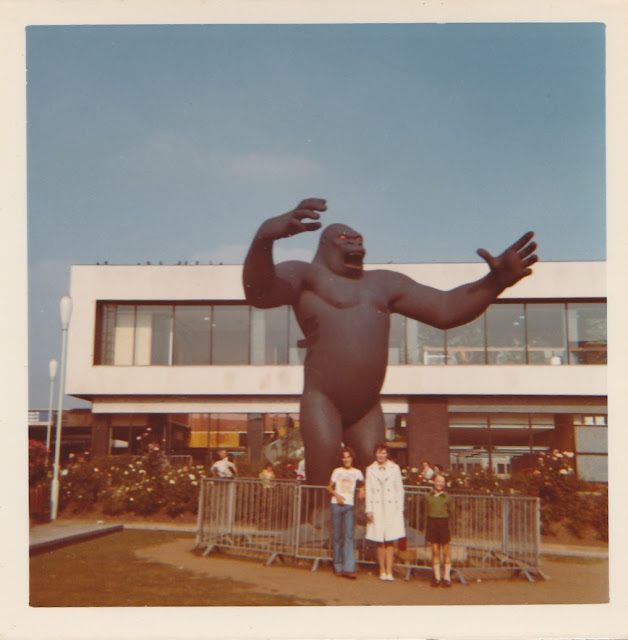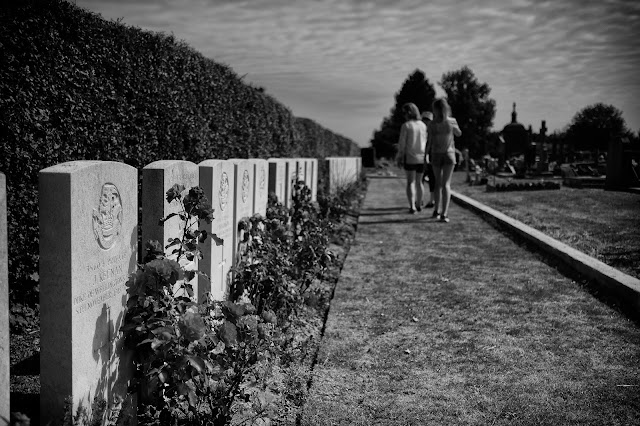Part 1 and 2 can be found here
Out of the woods
One of my reasons for spending the day in Birmingham was to visit a small photographic exhibition call "Out of the woods of thought" in the Argentea gallery, based in an area called called Hockley which is about 15 minutes out from the city centre.While Birmingham has a fine new metro system, I decided to walk it and quickly found that Birmingham's renewal has extended only so far. In the past, one of Birmingham's issues was its unconditional love affair with the motor car. Until recently, Birmingham was the hub of motor manufacture in the UK, and it reciprocated this affection by making Birmingham one of the most car accommodating cities in the UK
This resulted in an endless array of over passes and underpasses, ending up with UK's finest monument to motor transport, spaghetti junction. It also meant that in the past public transport was barely tolerated, rail in particular. Its not that Birmingham eschewed the need for public transport, it just it was slightly embarrassed that not everyone could or wanted to own their own car. As a result. while in other cities, train stations were massive cathedrals of steel and glass, Birmingham's main station, New Street, utilised the same architectly pattern as used in WW2 German U-boat pens. Even today, despite the new shopping center and investment, Birmingham's main station and consequently the 1st site many visitors will get of the city consists of dark troglodyte tunnels smelling of oil and diesel.
I was reminded of this as my short walk consisted of finding my way past bustling dual carriage ways the building of which had disjointed the natural flow and pathways of the city.
Finally we arrived at St Paul's square where the Argentea gallery was situated. St Pauls's square is an elegant Georgian built cluster of shops and giant church. This provides a snapshot of the Birmingham that existed before the industrial revolution shaped what the city is now. The church itself is often seen in photographs of the city, especially in autumn, where the natural framing by trees and the autumn leaves, combine to create a natural postcard. However I did not have much time to stay outside since now the weather was starting to close in, so after taking a few shots I went into the gallery.
 |
| Old Birmingham against the new |
The Argentea gallery
I had seen this exhibition advertised on social media, and two things about it intrigued me.Firstly the theme "out of the woods of thought". For me taking images in woodlands is a love-hate relationship, There is nothing so stimulating than wandering woodland, however I find my brain struggles to separate image from the chaos of branches and leaves. Therefore I hoped that the exhibition would give me some ideas how to improve.
The 2nd reason was the Solargraphy images by Al Brydon. If you don't know Solargraphs, they are ultra long exposure images that track the sun against a background. Generally they are as low tech as you can make a camera, consisting of a tin can and a piece of photographic developing paper. I have tried a few myself, and although you need 6 months or more to give them a go, I find them intriguing and rewarding. However I have never even considered they may have some commercial value, so i was intrigued to see how they were represented in a gallery setting.
The exhibition consisted of 9 artists, and the theme was well represented with each one having a different but consistent view off the theme. What I love about exhibitions like these is the chance to form a narrative; A form of expression that single images rarely allow you to do.
Below for me, are some of the highlights
Brian Stevens "Beachy Head" was a great example of photo story telling. The images themselves do not stand out and at first glance seem to have little to do with woodland, instead they are shots taken on Beachy Head, a set of chalk cliffs in Sussex, renowned for their beauty and apparently the suicide capital of the UK. In the exhibition book, the photos are accompanied with facebook entries from rescue teams documenting each event in human tragedy. In some way the gallery missed a trick by not presenting these with the images on the wall. The facebook entries but a whole new complexion on the misty cliff tops and red telephone boxes .
 |
| Dans Le Noir |
"Dans Le Noir" (Translation "In the dark"), is a set of IR images taken of the WW2 fortifications in Normandy printed on silk by Lynda Laird. I enjoy taking IR images myself, but these had an interesting treatment, with the foliage a bright red against the stark concrete. You could not help contrasting the red with the blood of men thrown against these monuments to violence.
 |
| Mametz Wood |
Mametz Wood is a set of B&W images of woodland by Rob Hudson, but with the exposure turned down to the point where the objects become shapes etched out of the landscape. It's an interesting and effective treatment, and eschews the colour we might expect from such a subject. Printing must be challenging however due to the restricted tonality
 |
| The Floods |
Joseph Wrights "The floods" were a more traditional view of woodland, albeit his view was of flooded land, which gave an air of mysticism and malevolence to the land. I must admit I was quite taken by these images, partly because they reminded me a lot about an image I once put into competition.
The image below, did not do well and the judge in question described it as "disturbing". At the time I was felt aggrieved , but thinking about it, if arts whole point is to generate strong emotion, then the photo was quite successful. One of the inspirations I took away was to visit the area again to take images of a similar theme
 |
| My "disturbing" image |
I was also much taken with J.M.Golding "Transitional Landscapes", which are landscapes generated from squares of photographic film to create a landscape captured in both sections of area and time.
Finally Al Brydon's Solargraphs. One of the things about Solargraph's is that you have very little control on the outcome. All you can do is place it somewhere you hope will create interesting results and will lie undisturbed for 6 months. In some ways it is the very antithesis of digital photography. Can an image generated by random effect have value and be called art? If there is a creative process it is in the way the images were printed. Solargraphs are produced on 5x7 inch B&W photographic print paper, however these were much bigger with wonderful rich blue hues. In doing so Al has made something beautiful from the random and chaotic
While I was there the gallery owner gave a little talk to the assembled students. Apparently she set up the gallery when she stopped being a lawyer after her child was born. She did and arts degree and a masters then setup the gallery. She said the advantage of Birmingham and her location is that she can afford far more space here. In terms of exhibits, she exhibits photos that are in that middle ground of abstract but commercial. She does not have enough time to look at portfolios so her exhibitors are found via social media.
Its certainly great to see a gallery specializing in exhibiting some of the fantastic creative photography out there and if anyone is in the area I would heartily recommend going there and I'll keeping an eye on future exhibits.
For me, I came away with a lots of inspiration and ideas plus a touch of frustration. I do often find club and competition photography limiting and would much prefer a wider canvas consisting of multiple pictures against a theme, but unfortunately their is little outlet for that.
Apart from the images themselves, the other noticeable thing was the quality of the printing. Total control over the output is one of my biggest issues, and I know sometime printing is something I will have to master.
The exhibition continues till the 21st December 2018
The Jewellery Quarter and the necropolis
As I left the gallery I realized I still had 4 hours to fill, so I decided to walk into Hockley to visit a location I had spied when I was in the area a year before. It was at this point when the rain decided to stop mucking about and started to pour down in truly biblical proportions. I wasn't really setup for this sort of weather and quickly my feet and trousers started to soak through as I trudged through the Hockley streets
Hockley's is better known as the jewellery quarter. It is a throwback to when Birmingham city was a myriad of small industries making it the workshop of Britain and the wider empire. These have mostly moved into out of town anonymous square boxes, but Hockley still retains much of the Victorian look and feel, which in the city centre has been largely buried under 5 metres of concrete.
The area still contains a large number of jewellery workshops and retailers. I bought our wedding and engagement ring from here and I an still somewhat proud that it was sourced from an area of such history rather than some jewellery conglomerate. Saying that the area, like many places have suffered from the rise of online shopping and is not as thriving as was when I got married. The area itself has a lot of charm, and there are serious attempts as renewing the area. I hope it succeeds because it has a lot going for it, especially since it is in great contrast to the concrete jungle other parts of Birmingham have become.
This time however I did not head for the center of the Jewellery quarter, but the graveyards next to the Metro System. I had spied them when visiting the excellent Jewelry quarter museum a year ago and noted then they looked interesting photographic locations. However I got a little lost on the way and rather than ending up in Warstone Lane cemetary as planned with its array of Victorian catacombs, I found myself in next door Key Hill cemetary instead.
However I was not disappointed by its suitability for photography. These cemeteries are no longer active, but the array of tombs and stones between the continually encroaching trees make a fantastic photographic location and it is surprising more people have not taken advantage of it
There is a fantastic gothic feel to the place and would of spent more time there. Unfortunately for me the weather was absolutely disgusting and I was getting cold and wet. Also without cover to change lenses etc, I decided I had to give up and find some shelter.
However it is definitely somewhere I want to visit again on a better day.
So soaked, cold and a bit tired I headed to the Metro, and the city center to locate somewhere to dry out












































